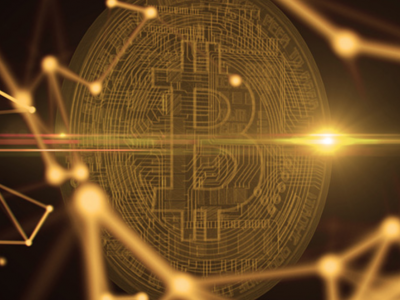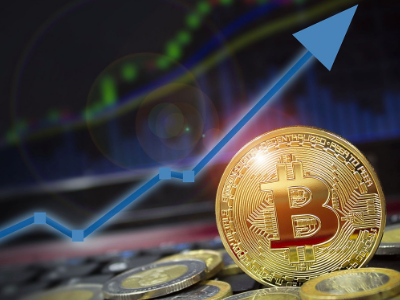The ten-year history of the blockchain has gradually convinced world experts that this phenomenon can still become the starting point for the transformation of the entire world economy. Perhaps this is still not a revolution and the technology is far from perfect.
But the main thing is that the precedent has been created and the development of alternatives in this direction is going on by leaps and bounds. The financial sphere is not the only one where the incentives are created by blockchain. A powerful infrastructure is built around it with attempts to implement technology into other spheres of human life. The production of crypto-currency, known to everyone as mining is one of such means.

Cryptocurrency is the collective noun for digital currencies created on the basis of blockchain technology. For encryption, there is a special principle of cryptography, which protects information about transactions from theft and counterfeiting.
Mining is the process of cryptographic calculations with a use of special equipment. For Bitcoin and many other cryptocurrencies, it is the only way to maintain the integrity and workability of the system. Here is a brief description of the operating principle for the newcomers. Technology creates the ability to transfer value (information) from one user to another. At the same time, the transfer of non-existent value and the transfer of one unit to several addressees are excluded. The key to this is a large number of participants in the system and the economic motivation of the miners. Once a transaction is initiated in the system, it becomes visible to all participants. This transparency is both the main feature and the advantage of blockchain. No transaction is considered committed until the information about it gets into the so-called block and will be confirmed several times – this is the function that the miners provide. For a block to be considered generated, the program must compute a hash function – a unique alphanumeric code that contains information about the previous block. Thus, the distributed database in the blockchain is a chain of blocks, each of which refers to the previous one and stores the history of all transactions that occurred since the first coin appeared. Once the block takes its place in the chain, the miner who generated it receives a cryptocurrency reward – this is how coins are issued. In addition, the miners receive a commission from each transaction.
Blockchain – the technology of recording and storing information, when data is written in a continuous chain of blocks. It is based on the principle of distributed registries - information is copied and stored not on one server, but on all computers that are part of the blockchain system.
Now let's take a quick look at the evolution of mining, touching only the significant events. It all began in 2008, when an unknown programmer published a document on the network describing the algorithm of the quasi-monetary tool based on the technology of the blockchain. According to the published algorithm of Satoshi Nakamoto, the author of the document, the remuneration of the miners is reduced by 50% every 210 thousand of mined blocks. At that time, each newly generated block brought 50 new coins. Now more than 477 thousand blocks have been generated, and the reward for each new one has fallen to 12.5 BTC. It is expected that by 2140 year the reward will be so small that the issue will virtually stop and the volume of bitcoins will not exceed 21 million BTC. According to the idea of the creator, this will protect the cryptocurrency from inflation. It is unknown now whether Satoshi assumed or not how quickly his offspring would grow up. Mining on PC processors, the most massive chips in the world, supposed to make Bitcoin truly decentralized and popular. But for a while it still remained only the entertainment of geeks and enthusiasts. By 2010, the both Bitcoin exchange rate and popularity had grown so much that its mining started to yield a small income. Mining began to move to commercial sphere and the rivalry triggered technological race.
The Global Cryptocurrency Benchmarking Study research has shown that since Bitcoin appeared, the miners have earned more than $2 billion on mining and $14 billion on commissions from transactions.
In the summer of that year, a mining farm was first launched on the GPU and the first block was mined using parallel computations. Since then, the age of industrial mining began. Having smelt the money, miners around the world rushed to buy computer graphics cards. Despite the constant increase in equipment costs and attendant maintenance problems, the mining farms continue to attract new followers even now. According to the growing complexity of the cryptocurrency mining, pools, the miner unions, began to form. For one block search, a large number of farms with a high capacity are used, and the reward is divided due to the "labor participation" in it. The power consumption of one GPU is about 200 W, the average power of a medium farm is comparable or even higher than the equipment index in the data center. The problem of energy supply, as well as the noise level and heat that the equipment produces, does not allow the creation of large farms at home. For these reasons, mining has moved to warehousing areas where there is no problem with either noise or cooling, and electricity is available at industrial tariffs. The competition in the niche of the mining farms continues to increase, bringing new profits to the component manufacturers.
Farm is a data center that combines several video cards (GPUs). It shows high computing power, which allows several cryptocurrencies to be mined simultaneously.
In 2011, it became obvious that GPU farms consume too much electricity, require constant attention and additional costs. Enthusiasts were searching for solutions to reduce these expenses. The third mining business development iteration led to the appearance of miners on FPGA (Field Programmable Gate Array) chips. Such devices were quite expensive, but much more compact, stable and more energy efficient than the GPU farms. Energy consumption save was thousands of percent. But still, video cards remained the mass solution. Most likely the niche specialization of such machines was the impediment to their popularity. FPGA-miners did not last long and remained a niche product, which did not play a significant role in mass mining. But the developments of manufacturers of these devices were useful to ASIC-miners, which became the next generation of equipment for cryptocurrency mining. Unlike FPGAs, which are used for a variety of tasks, ASIC chips (Application Specific Integrated Cirquit) were designed to perform only one task. But they perform it much better than any farm. The difference in performance of similar devices makes tens of times. However, there is also a downside, which prevents the mass distribution of ASIC-miners - zero liquidity in the secondary market. They work according to the algorithm, which allows mining of only three cryptocurrencies known today. The production of this specific equipment lasts even now, but all producers have problems with delivery. This is indicated by the general complaints of customers at specialized forums. In the context of battered cryptocurrency rate, this factor strongly inhibits their sales. The "arms race" being an endless capacity build-up has reached the level when the most popular cryptocurrency mining is no longer economically justified. The current size of one Bitcoin block is 1 MB, which allows the system to process no more than seven transactions per second. Visa or MasterCard payment systems witness such index to reach about two thousand, with capacity expenses being several times lower. This makes the entire system clumsy and inconvenient, and increasing the commission from each transaction for the miners can ruin the Bitcoin economy, as well as any other coin economy.
ASIC – processors are manufactured with a special mining-friendly architecture. Such devices have a high payback rate and are easy to maintain. Among cons are low liquidity in the secondary market and rapid ASIC outdate due to the growing complexity of the network.
A complexity increase obviously cannot last forever and, sooner or later, there must be a transition to the next level. And this is the turning point where many questions may appear. What is the possible way of blockchain and mining development? This is important to understand, because an equipment worth hundreds of millions is at stake! What if it suddenly becomes useless? There are several assumptions. The first way is to reduce costs. Some hopes for this are provided by the development of alternative energy. Receiving freemium energy will reduce the cost of mining. This issue is regularly discussed on specialized forums. The creation of farms using solar, wind and geothermal power is still only at the stage of the concept. There have not been any major projects implemented. Due to the fact that the cost of equipment is still large, the entry threshold with such systems is very high, and the payback of equipment is still slow and thus risky. It is unlikely that this will become mainstream for the next five years, but the possibility of a breakthrough technology that makes renewable energy available, still exists. The second possible script is the abandonment of mining as a phenomenon. Bitcoin, which implies the efficiency of mining depending directly on the equipment productivity, uses the Proof-of-Work protocol. Some cryptocurrencies use the Proof-of-Stake protocol. They do not imply mining as a mandatory process at all. The system exists due to the circulation of cryptocurrency among users. By the way, this protocol is the one that Ethereum platform is planning to move to. This has already been stated by Vitalik Buterin, the creator of Ethereum: "When we move to the Proof-of-Stake protocol, the need for ether mining will drop sharply even at the first stage. Proof-of-Stake uses an algorithm which does not require that a large number of computers constantly make calculations. This is an algorithm where a coin is used inside the platform itself. The consensus will become much cheaper and safer. And in fact, miners can lose their business." Imagine the joy of computer gamers when suddenly the CPU prices fall dramatically! Now it is too early to speak about panic, but if the creators of other cryptocurrencies will consider this... The third way is to reduce the complexity of computation in the blockchain due to the use of alternative protocols of cryptography. Some industry enthusiasts are already working on such projects. If the complexity of the calculations goes beyond the reasonable, then why not change the operation of the system in general? So did, for example, the creators of Blockchain Ventureon.
Anton Sobor, the BDM of Ventureon, claimed: "The complexity of mining is laid by the blockchain creators themselves. What are they motivated by while creating such complicated algorithms? The answer remains unclear. The complexity has inconsiderable affect on safety. Creating our project, we proceed from the personal experience of our cryptography specialists, as well as from the principle of "necessary is enough". All the functions of the blockchain are preserved, with security only increasing, and complexity decreasing prominently."
It is also interesting that Ventureon mining does not require GPU. It is planned instead to create server-side mining pools, probably for easier and less expensive connection of the miners. This is likely to become a great advantage over another farms.
Of course, these are not all possible ways of mining industry development, but only the most vivid and obvious directions. There is one thing to say for sure. Mining being a mass business will exist only if the rate of specific cryptocurrencies increases. And this, in turn, depends on whether the blockchain will be accepted into the world economic system, as an alternative financial tool. The attempts to regulate the circulation of cryptocurrency at the level of individual states cause a strong resonance of the crypto community. That is perfectly visible on fluctuations of the rates of the basic cryptocurrencies. But, in my opinion, it is not possible to strangle the initiative of enthusiasts completely. The point of no return has been already reached. Blockchain as a phenomenon has been proved to be effective and will develop further, influencing the society strongly. And only time will tell what its future will be.
Vitaliy Serbulenko (Managing partner, Marketing Expert of Hypercube Ventures).











